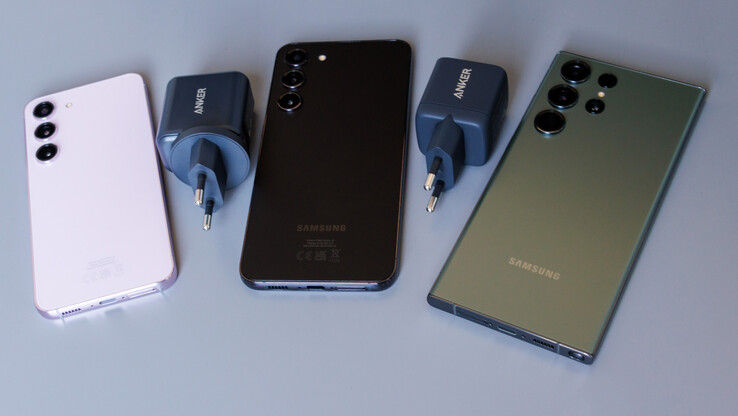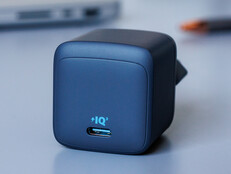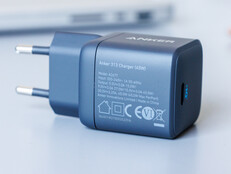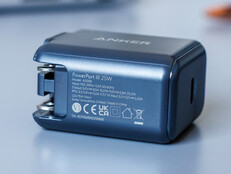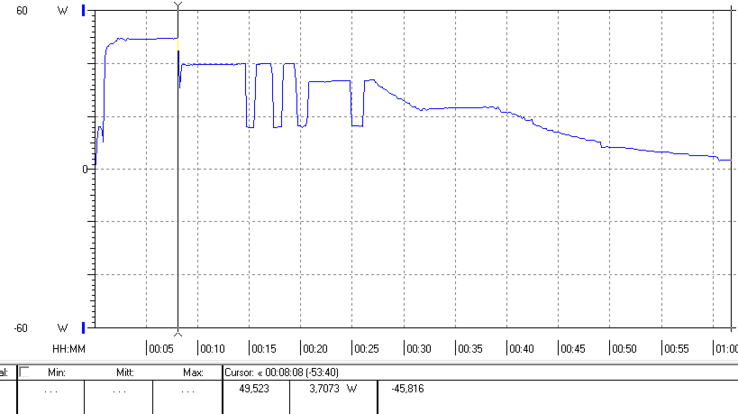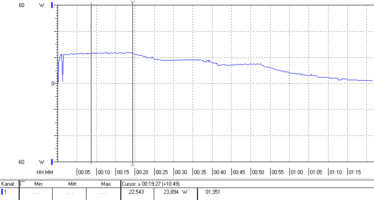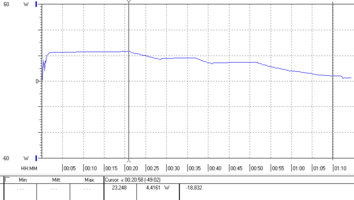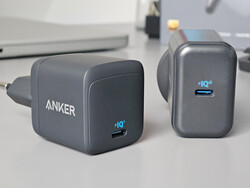Anker Ace 3 chargers hands-on review - An affordable alternative not just for Samsung's Galaxy S23
The Anker Ace 3 series features two chargers designed especially for use with the Galaxy S23 lineup. They are intended to deliver no-compromise charging performance at more affordable prices.
The Anker 313 (Ace, 45W) is aimed at users of the Galaxy S23+ and S23 Ultra and supports charging speeds of up to 45W. The naming convention of the 25W model is not quite clear-cut. It is sometimes labelled as PowerPort III (found on the charger itself), and other times it is called Charger 313 (Ace, 25W) or even Charger 312. This product caters particularly to Galaxy S23 users who travel a lot.
Nonetheless, both power adapters can also be used with phones made by other companies – something Anker explicitly highlights in the product descriptions.
| Charger 313 (Ace, 45 W) | PowerPort III/Charger 312 (Ace, 25 W) | |
|---|---|---|
| Output | up to 45 watts5.0 V ⎓ 3.0 A 15 W9.0 V ⎓ 3.0 A 27 W15.0 V ⎓ 3.0 A 45 W20.0 V ⎓ 2.25 A 45 W | up to 25 watts5.0 V ⎓ 3.0 A 15 W9.0 V ⎓ 2.8 A 25.2 WPPS: 3.3 - 5.9 V ⎓ 3.0 A (max. 17.7 W)3.3 - 11.0 V ⎓ 2.25 A (max. 24.75 W) |
| Plug types | Type C "Europlug" | Type A and Type C |
| USB ports | 1 x Type C | 1 x Type C |
| Weight | 77 g | 70 / 88 g |
| Price (RRP) | €26 | €13 |
Case - GaN versus modular design
The Anker 313 (Ace, 45W) uses gallium nitride (GaN) technology, which not only allows for more compact chargers but also supposedly offers superior power efficiency and heat dissipation. PowerIQ 3.0 is a technology designed to provide an optimal charging experience for all kinds of mobile devices.
The 45W power adapter is indeed very compact and weighs 77 g (0.17 lb). Its powder-coated surface has an exceptionally pleasant feel and lends the product a premium look. The Anker 313 has impeccable fit and finish and feels very sturdy.
The 25W model has to make do without GaN technology. However, it comes with a modular plug that lets users switch between a Europlug and a Type A plug, which is used in North and Central America as well as many Asian countries. You'll need to attached an included adapter to give the charger a Europlug (note: the type of detachable plug will vary by region). Doing so will make the device look slightly clunky and increase its weight from 70 to 88 g (0.15 to 0.19 lb). The charger's exterior doesn't look quite as premium due to the glossy plastic, but its workmanship is still great and gives us no reason to complain.
Both chargers have a USB-C port. There are no cables included in the box.
Charging speed and power consumption – Anker 313 Charger (45W)
We tested the charging performance of the Anker 313 (45W) using a Samsung Galaxy S23 Ultra. Anker claims that the product can charge the phone in less than an hour. In our testing, it took 60 minutes flat to fully charge the 5,000 mAh battery.
We also monitored the charging power using the Metrahit Energy multimeter to get an idea of whether the 45W rated power was fully utilised and how long was this the case. The Anker 313 only tapped into its full power for the first ten minutes, which very quickly raised the battery level to 32%. We even measured a peak power usage of 49.74W during this phase. Subsequently, power consumption dropped to 40W for the next six minutes, until the battery reached 46%. The power draw then fluctuated between 16W and 33W and, as expected, continued to decrease with increasing battery level. As a result, the Anker 313 required eight minutes to charge the last 10% of the battery.
At idle, power consumption varied between 0.02W and 0.08W (mean: 0.05793W), thus demonstrating that the Anker 313 is fairly efficient.
Charging speed and power consumption – Anker 312 Charger (25W)
When testing the modular 25W charger, we were able to find an original Samsung adapter with the same rated power for comparison purposes. Anker promises a charge time of under one and a half hours for the Galaxy S23 (3,900 mAh) and delivered on this promise pretty effortlessly. During our testing, the battery was already fully charged after 74 minutes. The Samsung adapter was just as fast, likewise taking 74 minutes to do the job.
As with the 45W model, we connected the Anker 312 (Ace, 25W) to the multimeter. The charger drew 24.37W of power until the battery level reached 44% and gradually lowered its power output afterwards. The Samsung adapter started off at 21W and slowly worked its way up to 23.26W. The 41% mark was reached after 21 minutes, and then the power output began dropping, but at a slightly slower pace than on the Anker charger.
Both chargers only consumed a small amount of power at idle. The Anker 312 drew between 0.059W and 0.089W (mean: 0.0726W), whereas the Samsung charger was even more efficient and used between 0.0085W and 0.0327W (mean: 0.0187W).
Pros
+ value for money
+ Type A and Type C plugs (only on 312)
+ good charging performance
+ not just for Galaxy phones
Cons
– power usage could be better at idle
– slightly chunky with Europlug (only on 312)
Verdict – Inexpensive alternative to Samsung chargers
During our hands-on with the two Anker third-party chargers, they managed to impress us and delivered good charging performance as well as low power consumption when sitting idle in a socket. The Anker 312 (Ace, 25W) is without a doubt a especially interesting option for those who like to travel and don't necessarily want to carry an extra plug adapter with them. If you need more power, you can't go wrong with the Anker 313 (Ace, 45W).
The Anker chargers are compelling products thanks to their good charging speeds and affordable prices.
That said, the original Samsung charger was considerably more efficient in our comparison. It is up to you whether this justifies the higher price. In terms of list prices, the Anker chargers don't even cost half as much as the Samsung one. This alone already makes them an appealing alternative, not to mention they can be had for substantially less from other retailers.
Price and availability
Both the 313 Charger and 312 Charger are available directly from Anker. The company is offering a discount on the 25W model at the time of writing this review. You can also get them at a slightly lower price from retailers like Amazon.
Anker 313 Charger: €25.99/US$29.99/£24.99
Anker 312 Charger: €11.99/US$14.99/£17.99
Transparency
The present review sample was given to the author by the manufacturer free of charge for the purposes of review. There was no third-party influence on this review, nor did the manufacturer receive a copy of this review before publication. There was no obligation to publish this review.


 Deutsch
Deutsch English
English Español
Español Français
Français Italiano
Italiano Nederlands
Nederlands Polski
Polski Português
Português Русский
Русский Türkçe
Türkçe Svenska
Svenska Chinese
Chinese Magyar
Magyar